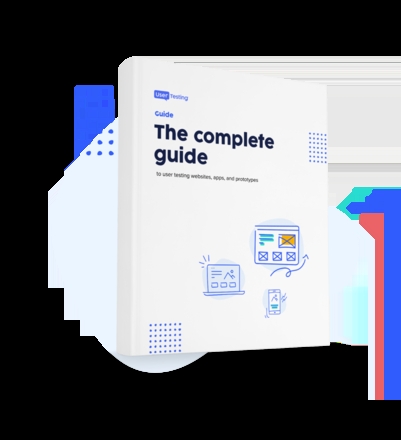
Predicting user behavior in six simple steps

Back in the early 2000s, Netflix’s founders met with the CEO of Blockbuster Video, offering Blockbuster the chance to buy their company for $50 million.
To their dismay, the CEO of Blockbuster laughed at the offer, stating his opinion that: “The dot-com hysteria is completely overblown!”
We all know how things turned out. Blockbuster doesn’t even exist anymore, and Netflix is now the most-used streaming service in the world.
The story is just one illustration of how, frankly, terrible humans are at predicting user behavior.
For user experience (UX) professionals, relying on hunches and innate wisdom for design and product decisions is a dangerous game—one that could inhibit long-term growth. Thankfully, there’s a better way forward. With advancements in machine learning, big data and automation, UX teams can harness the power of data-driven insights to improve decision-making and predictions.
In this guide, we explore the art and science of better understanding what your users will do next. In short, predicting what they will do when presented with a number of UX scenarios and options. This is your end-to-end guide to predicting user behavior through user testing. Read on to find out how.
What is user behavior?
For those new to the world of user-centric design, let's start with an essential definition of a term we’ll use throughout this guide: "user behavior". User behavior encompasses everything a user does when they visit your website, including:
- The pages they visit
- Where they click or hover on the page
- How long they stay on each page and your website
- Whether they make a purchase or drop off your page
Gathering data about user behavior is extremely helpful for optimizing the user experience. Data-driven design improvements offer a return on investment far greater than traditional marketing campaigns. If you can identify roadblocks within the user journey, you can then make tangible improvements to your design and boost conversions.
How to identify user behavior
There are a ton of ways to identify and monitor user behavior. Most website owners will be familiar with Google Analytics, for example, which is a good foundational tool for gleaning insights into how users interact with your website.
But identifying what users do is only half the story. You’ll also want to uncover why. Otherwise, any improvements you make to your solution will just be semi-educated guesses.
This is where platforms like UserTesting become a game changer—empowering UX teams to automate the process of tracking, collecting and analyzing both quantitative (what users do) and qualitative (why they do it) user insights remotely.
And, as you’ll find out in the next section, this data is pivotal for accurate, trustworthy predictions.
Is it actually possible to predict customer behavior?
Short of having a crystal ball, the best way to predict customer behavior is by analyzing it in the present. Rather than guessing which product design is most likely to boost conversions or going for the most aesthetically appealing interface, you can use your UX research platform to talk to or monitor real users as they interact with your product or prototype.
The more data you collect and analyze, the more intelligent your decision-making process will be. You’ll no longer be taking stabs in the dark. Instead, you’ll be able to predict exactly how users will interact with your design iterations, and the conversions will come rolling in!
Six steps to predicting customer behavior
We hope you’re excited to dive into the world of data-driven predictions and create some exceptional user experiences. Note that this transformation takes time. Think big but start small, prioritizing high-value, easy-to-implement projects that deliver tangible returns quickly.
1. Set your research objectives
The first step on your journey towards data-driven prediction prowess is what we refer to as the discovery phase, where you meet with your stakeholders to define the user problem at hand, hypothesize potential solutions and put together a research plan.
The plan you put together will depend on what you want to achieve and where you are within the product lifecycle. For example, if you want to improve your website’s bounce rate, then a usability test or an A/B test would work. Alternatively, if you’re in the early stages of development, card sorting followed by tree testing will help you evaluate your product’s structure.
Whatever you do, remember to aim for a mixed-method approach, blending qualitative and quantitive studies for a full picture of what users are doing and why. All research methods have their limits. That's why using a combination of approaches helps to fill in knowledge gaps and paint a more complete picture.
2. Identify your users
Predictions based on users that don’t use your product won’t get you very far. To architect an experience your users love, you’ll need to hone in on your personas: the various groups of people most likely to engage with your product.
You should study each persona during your research project to gain a deeper understanding of their motivations, how they think and feel about your product, and any obstacles that impede their experience.
Side note: if you’re looking for help with recruitment, we’ve got you covered. With our automated participant engine, you’ll gain access to over 120 million diverse, quality study participants worldwide.
3. Test time
Plan formulated and participants ready to go, it’s time to jump into action, using your cloud-based research tool to conduct quantitative and qualitative remote user research.
With the right platform, the research process will be seamless. In a few clicks, you’ll be able to set up your study and then watch the platform get to work, utilizing the prowess of machine learning to automatically monitor and collect user insights.
Of course, if you’re running a moderated study, you may need to be on hand for interviews. But, even then, you’ll want to consider using a platform enriched with automation and data analytics. Capabilities like automatic transcripts and in-built visualization tools help you to make sense of video insights faster, so you can deliver impactful UX predictions at speed and scale.
4. Discover the patterns and report back
Once your study is over, your user research platform will start mining for insights on your behalf, discovering patterns in user behavioral and attitudinal data that will inform your predictions.
From there, you can put those predictions on paper in your research report. Look at the user behavior trends you’ve identified and use these to make data-driven recommendations about how you expect users to act based on your proposed iterations.
Make sure to provide evidence in your report, so your stakeholders can easily understand your thinking and see the insights for themselves.
5. Iterate, test, and repeat
Now, you can hand over to your design counterparts, confident that they’ll be able to make truly customer-centric design decisions that result in happier, more loyal users.
But the work isn’t over! As we mentioned, the more data you collect and analyze, the better your user predictions will be. So, rather than looking at research projects in isolation, embrace a cyclical mindset, embedding UX research throughout the design process and regularly augmenting your solution based on user behavior insights.
By keeping your finger on the pulse, you’ll gain an unparalleled, holistic understanding of how and why your users interact with your product in the way they do. Over time, these insights will fuel a supercharged research process with more accurate predictions, shorter research cycles, and ultimately a solution that exceeds your users' expectations.
As you collect more and more valuable insights, you’ll want to create a data repository where you can easily access, discover and share user insights from across the organization. It’s easy to do this with tools like ours which provide a single source of truth for all user and customer experience insights.
6. Monitor and measure UX over time
Last but not least, we must remember that user behavior predictions only really come to life with measurement. To prove the value of user research and design, implement a metrics program that measures the user experience over time. Traditionally, measuring UX has long been considered an intangible goal. But the data-driven approach you’ve taken makes it entirely possible.
UserTesting's QX Score is a robust UX metric that offers a comprehensive evaluation of user experience by combining qualitative and quantitative data. This score integrates direct user feedback, behavioral data, and industry benchmarks to provide a holistic view of a product's usability and satisfaction levels.
How to use UserTesting to predict user behavior
At the end of the day, predictions without data are just opinions. To truly predict user behavior and build solutions your users love, you need to uncover how and why your users interact with your solution in the way they do. The tools and processes above will help you do that.

Get started with experience research
Everything you need to know to effectively plan, conduct, and analyze remote experience research.





